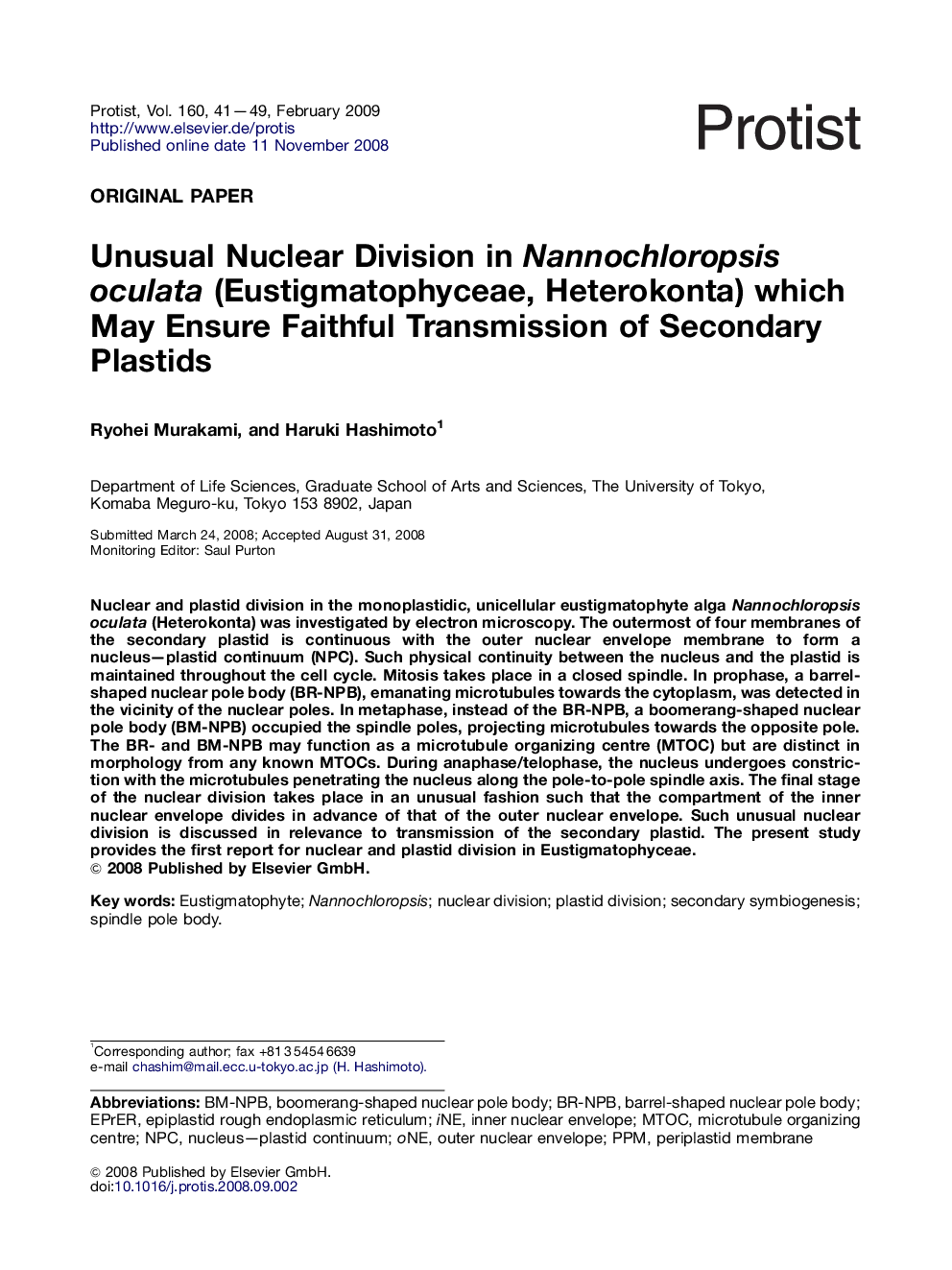| Article ID | Journal | Published Year | Pages | File Type |
|---|---|---|---|---|
| 2062143 | Protist | 2009 | 9 Pages |
Nuclear and plastid division in the monoplastidic, unicellular eustigmatophyte alga Nannochloropsis oculata (Heterokonta) was investigated by electron microscopy. The outermost of four membranes of the secondary plastid is continuous with the outer nuclear envelope membrane to form a nucleus–plastid continuum (NPC). Such physical continuity between the nucleus and the plastid is maintained throughout the cell cycle. Mitosis takes place in a closed spindle. In prophase, a barrel-shaped nuclear pole body (BR-NPB), emanating microtubules towards the cytoplasm, was detected in the vicinity of the nuclear poles. In metaphase, instead of the BR-NPB, a boomerang-shaped nuclear pole body (BM-NPB) occupied the spindle poles, projecting microtubules towards the opposite pole. The BR- and BM-NPB may function as a microtubule organizing centre (MTOC) but are distinct in morphology from any known MTOCs. During anaphase/telophase, the nucleus undergoes constriction with the microtubules penetrating the nucleus along the pole-to-pole spindle axis. The final stage of the nuclear division takes place in an unusual fashion such that the compartment of the inner nuclear envelope divides in advance of that of the outer nuclear envelope. Such unusual nuclear division is discussed in relevance to transmission of the secondary plastid. The present study provides the first report for nuclear and plastid division in Eustigmatophyceae.
